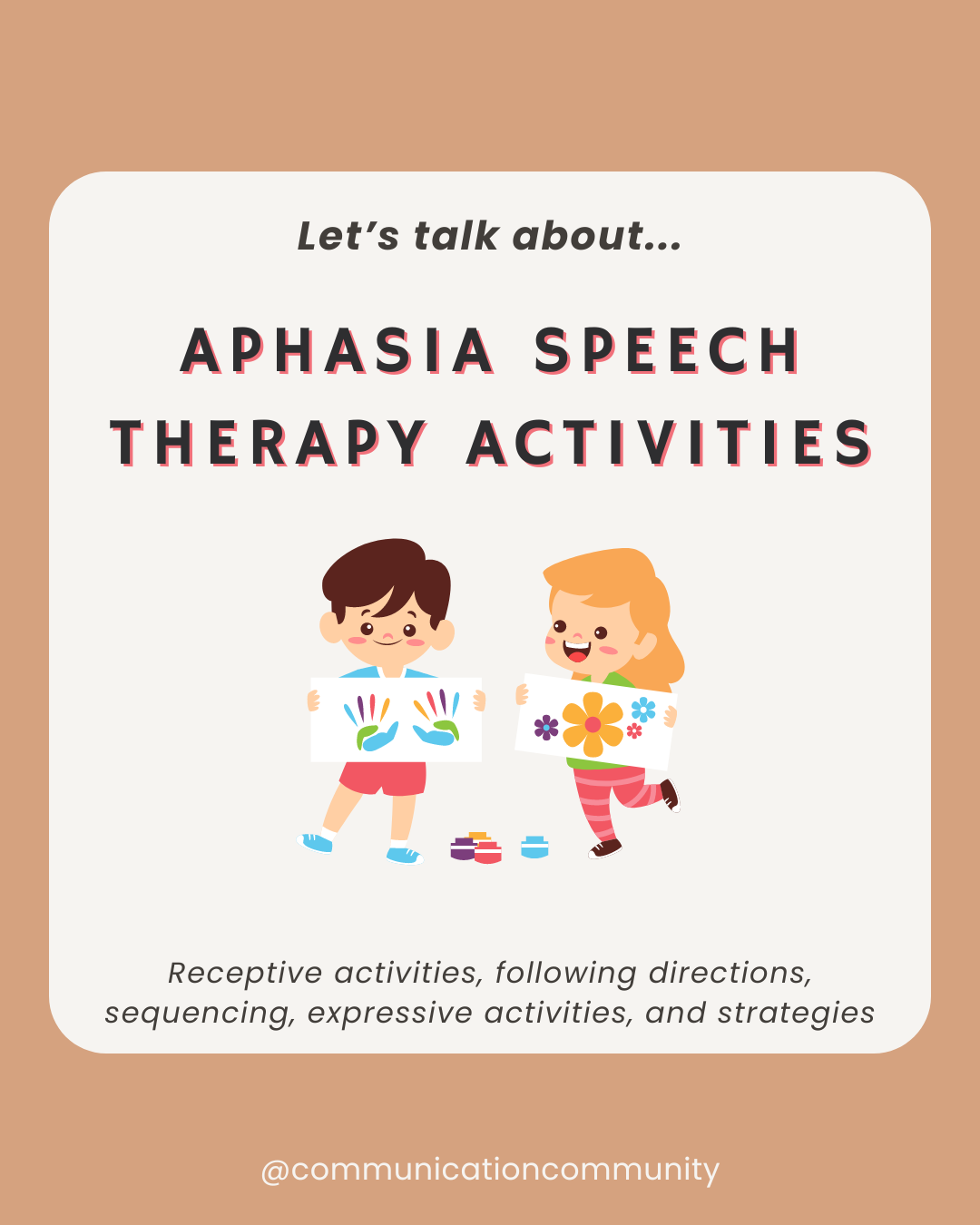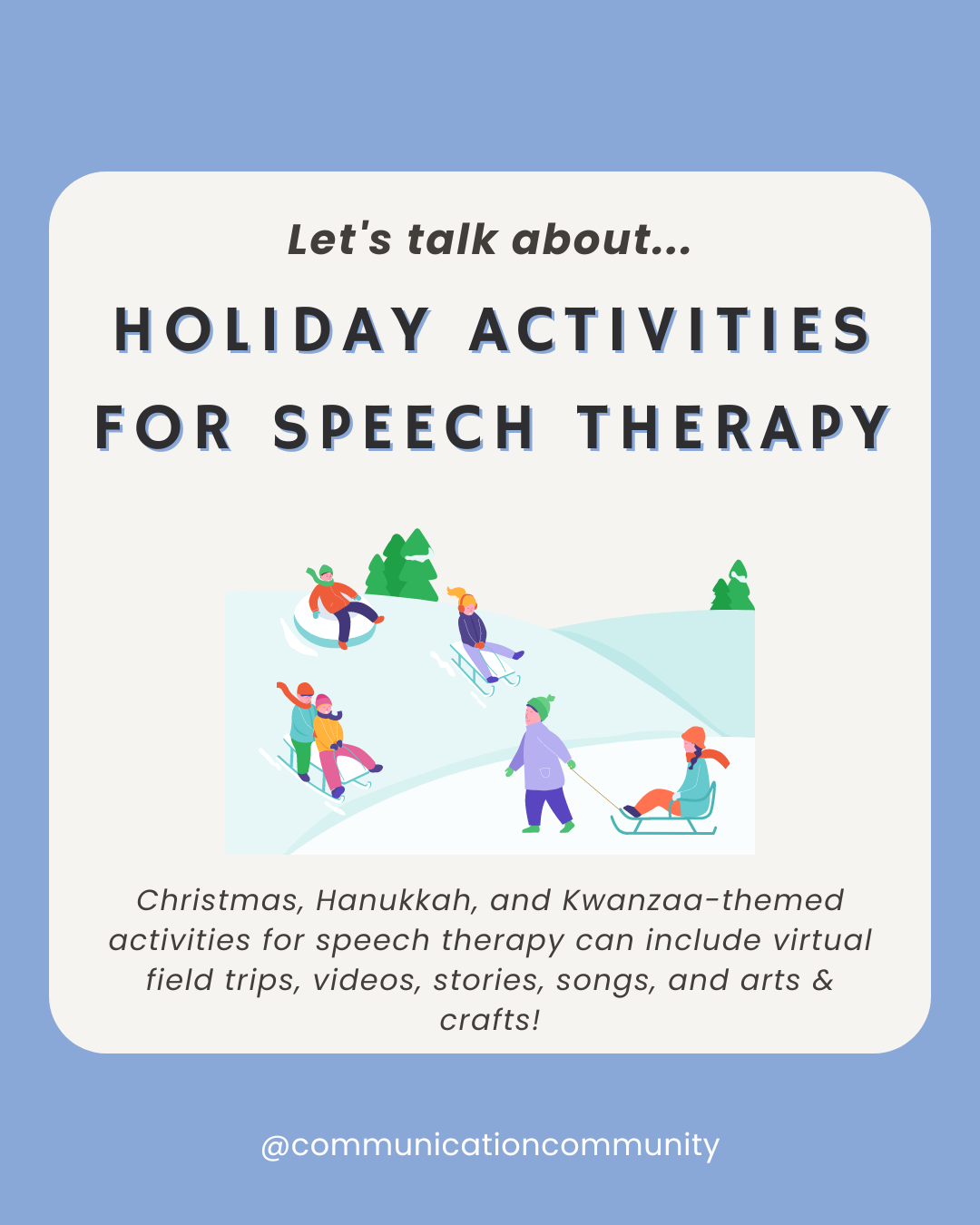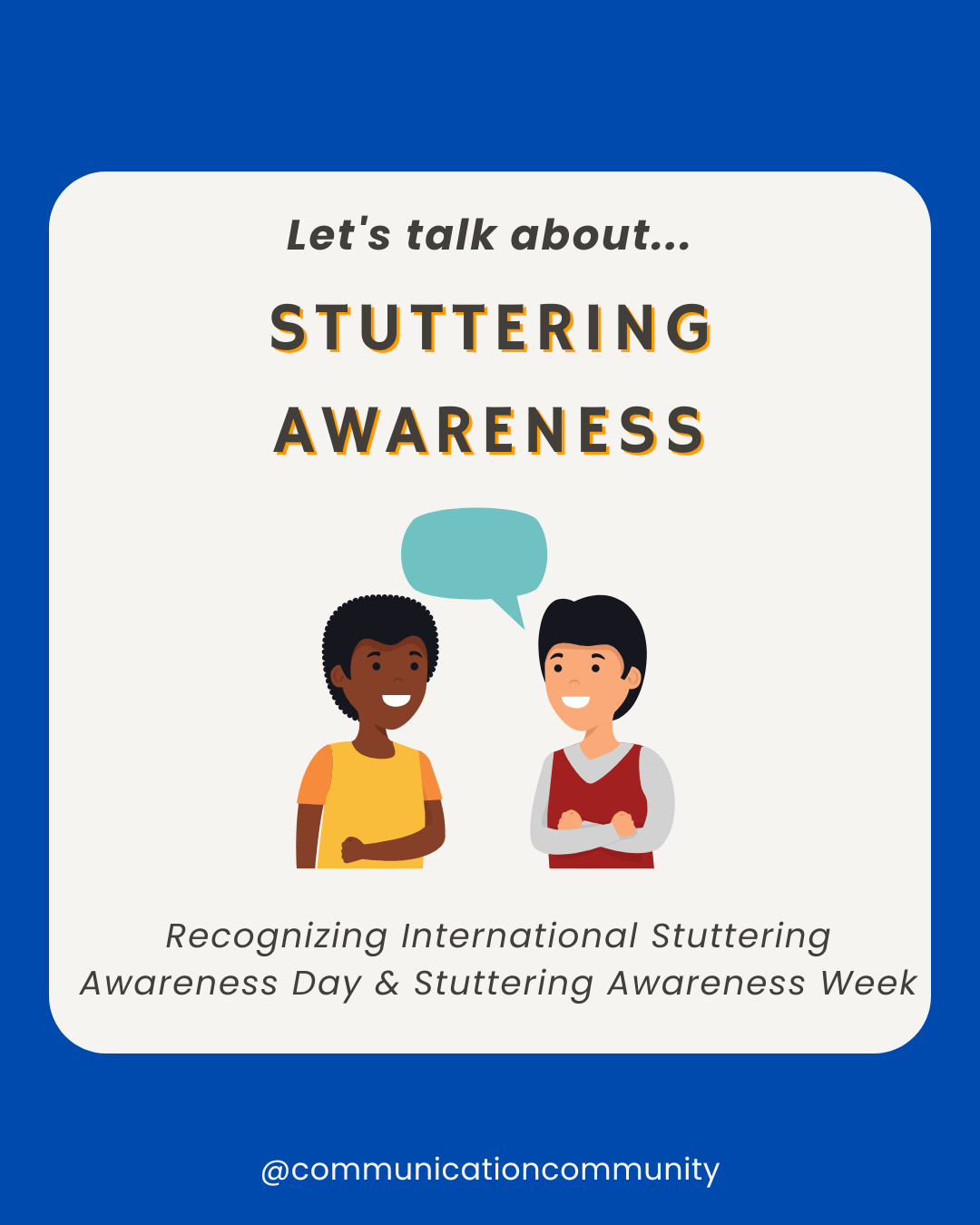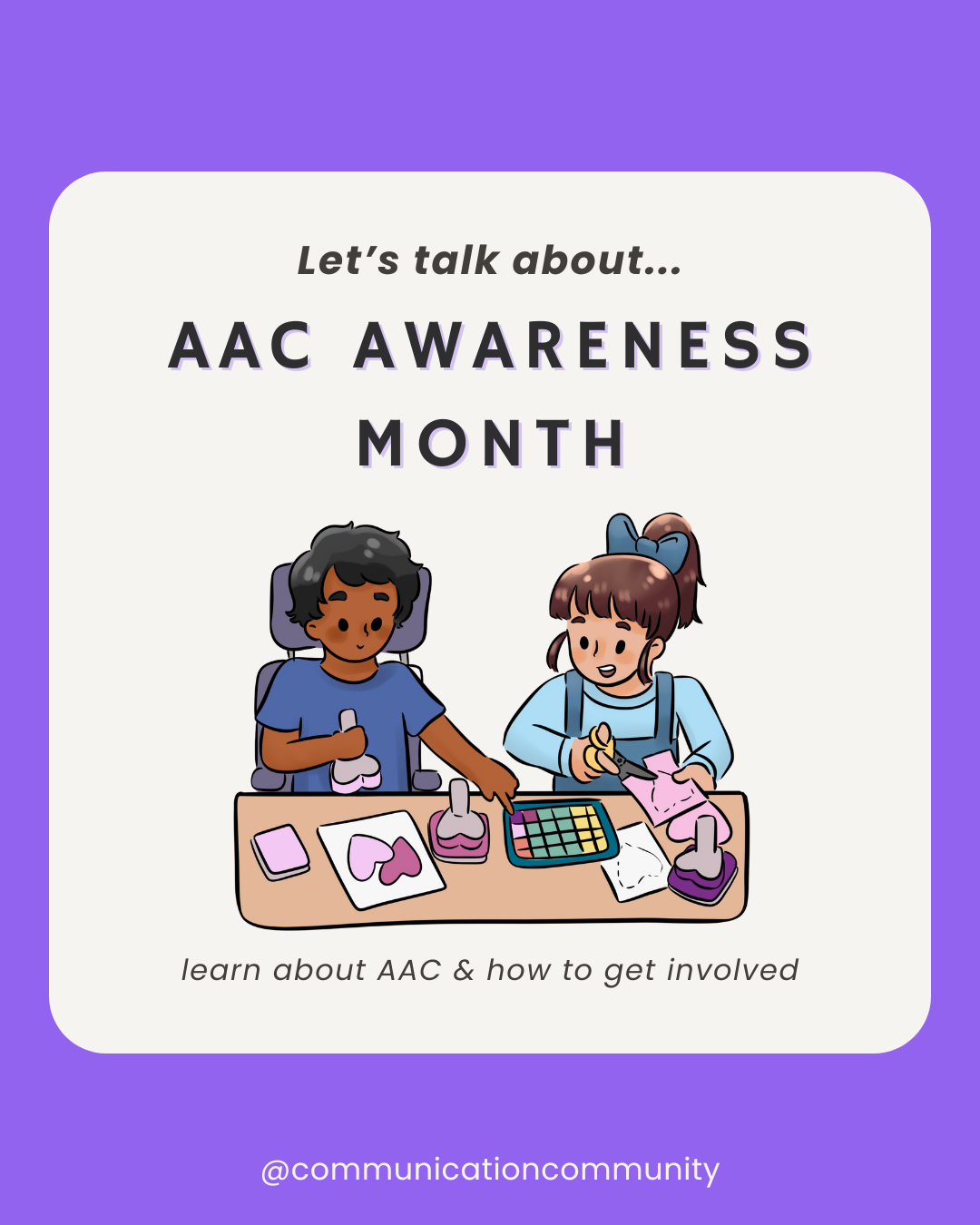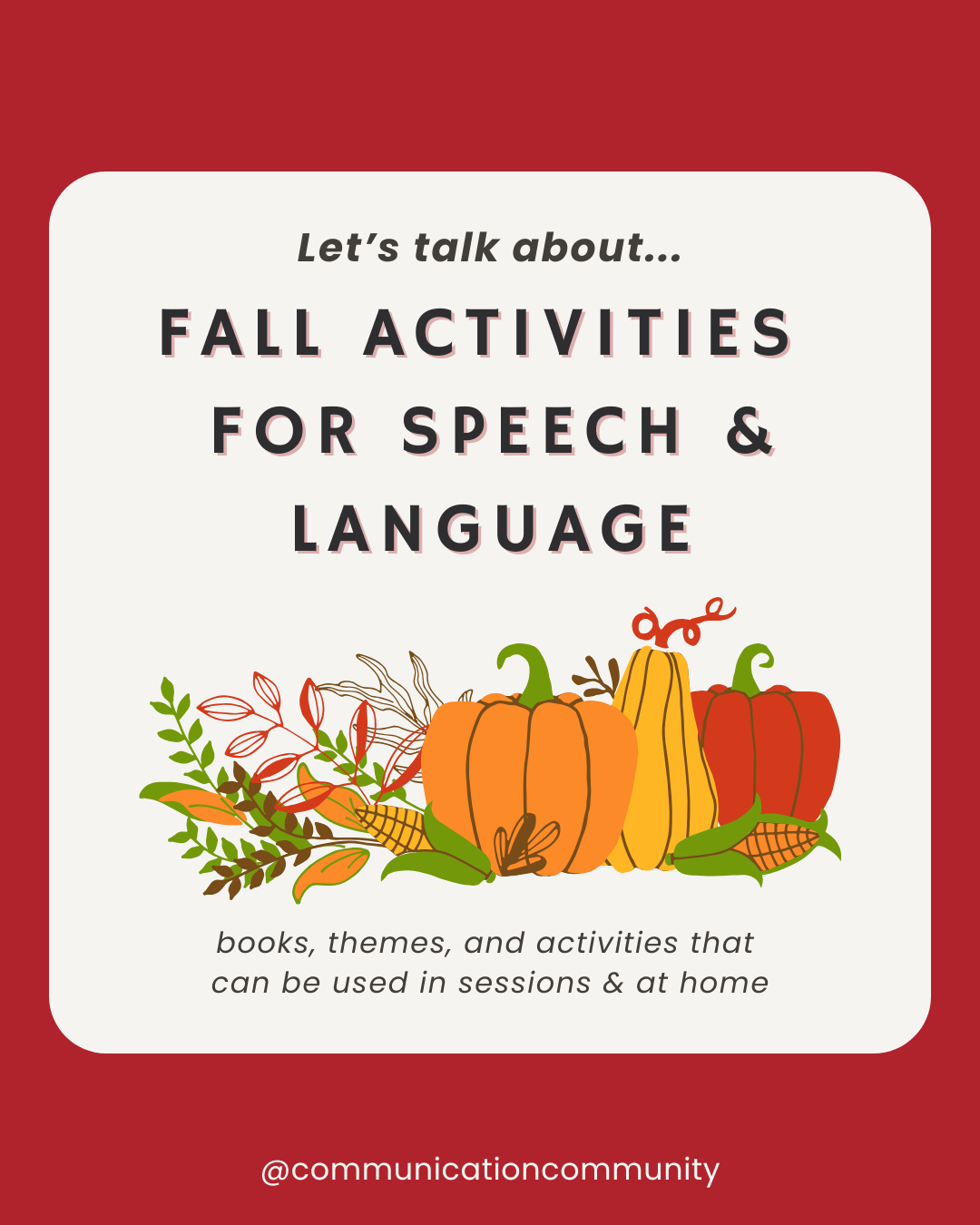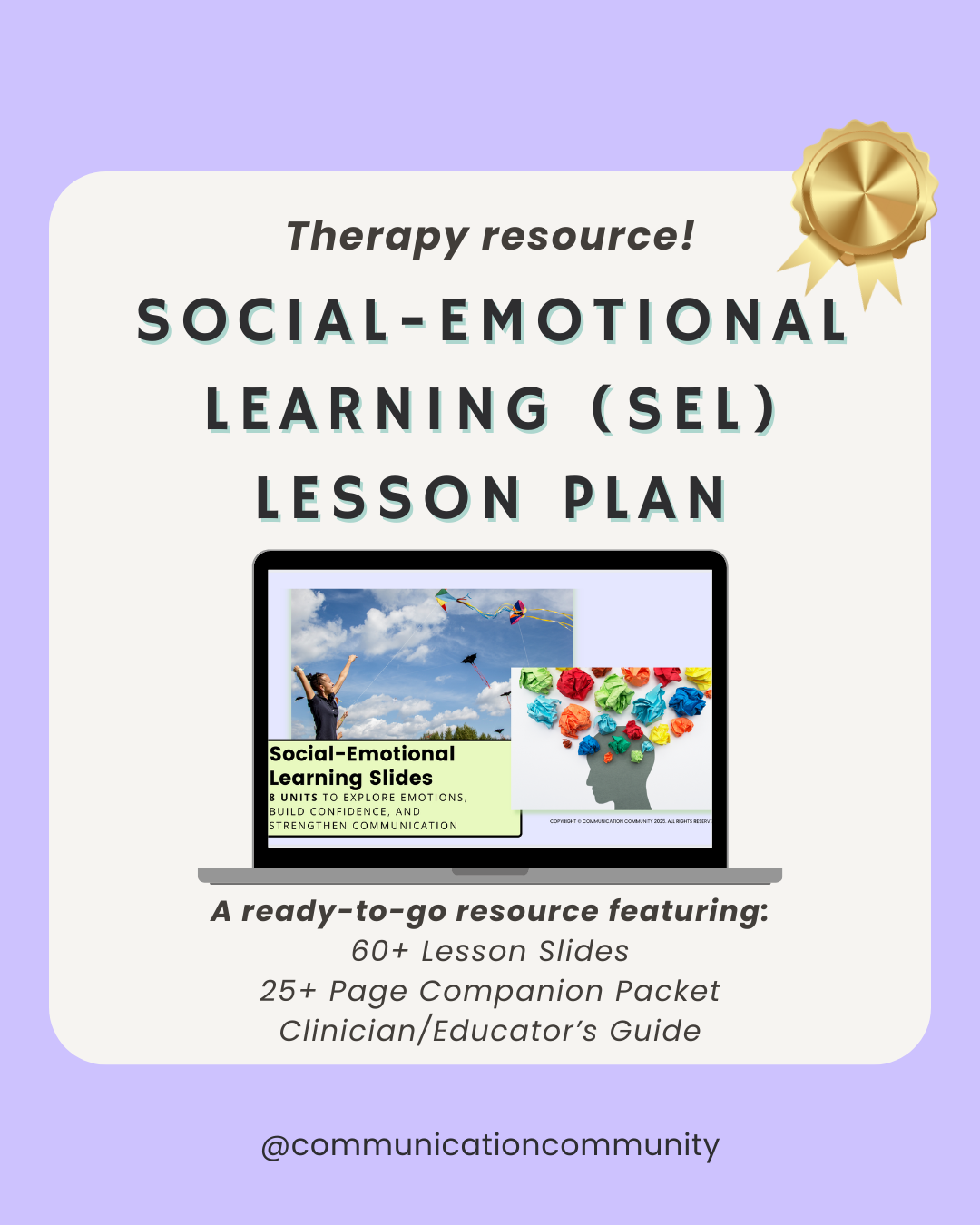What is Aphasia?
Aphasia is a communication disorder that affects one’s ability to understand and/or express speech and language. It does not affect one’s intelligence.
Aphasia is always secondary to a brain injury (e.g. trauma or stroke) of some kind and is not genetic in nature. Depending on the region of the brain that is impacted, it can affect each person in different ways. Most often, aphasia affects the left hemisphere of the brain. Our left hemisphere houses the centers that help us understand and produce speech and language.
Read more about it in our article, What is Aphasia? [Intro & Types]
How to Treat Aphasia
The first thing to do when working with an individual with aphasia is to complete an evaluation and write treatment goals. An evaluation should include (but is not limited to):
(1) Information about the nature of language difficulties (whether it be with auditory comprehension, naming, etc.). This can be obtained through interviews/questionnaires and other informal/formal assessment measures.
(2) What the individual (and caregivers) want to work on - commonly referred to as family or patient-centered care.
Once the evaluation is complete, goals can be written that can help guide therapy sessions. You can read more about How to Write Aphasia Goals [with goal bank], here!
Aphasia Activities for Speech Therapy
Almost all individuals with aphasia have difficulties with naming but other difficulties may vary. For example, if an individual does not have many receptive difficulties and is able to follow directions adequately, activities focusing on following directions are probably not the best choice for them. Check out some of our favorite therapy activities for aphasia:
Receptive Activities
Naming:
- Show your client 2-4 pictures, say a word, and have them (e.g., point to) the picture that matches the word you said. I like these picture cards. I try to use words that are functional and used commonly!
- Example: Present three pictures with a banana, apple, and pear, and say, “Where’s the apple?”
- You can also do this with actual objects you have!
2. Another way to target naming is by having the individual point to items in their environment.
- Example: You could say, “Where is the window?” or “Point to the door.”
- Note: it is easiest to target nouns in this way but verbs and adjectives are important as well! You may ask individuals to find something “small” or “large,” or “heavy” or “light. Depending on the individual’s level of naming difficulty, familiar environments (e.g., home) may be easier to elicit names compared to unfamiliar environments (e.g., train station).
- Using picture cards, you can have individuals identify action words such as, “eat,” “sleep,” “walk,” “clean,” and more. If on a tablet or computer, Google Images is great for this as well.
Following directions:
There are numerous ways to target following directions. I try to keep these directions as functional as possible in order to increase the generalization of skills across settings.
- Body parts:
- “Touch your nose.”
- “Touch your eyes.”
- “Touch your shoulder.”
To increase complexity, I will change the action associated with a familiar direction.
- “Tap your nose.”
- “Blink your eyes.”
- “Scratch your shoulder.”
2. Prepositions:
I will give the client 1-3 items (e.g. paperclip, coin, eraser) and a box (aka the lid of the naming cards) and give directions with prepositions.
- “Put it in the box.”
- “Put it in front of the box.”
- “Put it next to the box.”
To increase complexity, I may use two items and/or give two-step directions.
- “Put the paperclip behind the box.”
- “Put the coin next to the box.”
- “Put the paperclip in front of the box and the coin behind the box.”
3. Functional objects:
These can be used more often in a naturalistic setting. For example, if you’re in a kitchen, you can use kitchen gadgets or food.
- “Get the coffee.”
- “Get the cutting board.”
- “Put the milk on the counter and the cup in the sink.”
Sequencing
Sequencing activities require individuals to follow multiple directions to learn a routine. A simple sequence may be the 2-step direction presented above, “Put the milk on the counter and the cup in the sink,” or it may be a 4-step sequence that involves making coffee. Depending on your client, you may present sequences verbally, in writing, or both verbally and in writing.
- Recipe: In naturalistic settings, you can have individuals follow sequences that may include following a simple recipe, like making an omelet or a pasta dish.
- Household tasks: Individuals can follow directions for completing a household task, like unloading a dishwasher.
- Example:
- 1. Put silverware away
- 2. Put all cups/glasses away
- 3. Put all plates away
3. Non-home settings: You can target functional sequencing in skilled nursing facilities, outpatient clinics, and other environments as well. For example, you can take written directions (cut out each individual direction) and instruct clients to put the steps in order. If reading is a difficult task for them, you can use pictures and have them put the pictured steps in order.
Expressive Activities
Naming:
Complete some of the same receptive activities mentioned above, but instead of having the individual identify a picture or object, have them say what the item is. They can respond verbally, in writing, or a little of both depending on their current skills and goals.
Answering questions:
- Yes/No: Yes/No questions are used alllll the time, yet responding to yes/no questions can be difficult for some individuals with aphasia. I like to target yes/no questions using concrete, basic facts.
For example,
- “Is your name ____ [correct name]?”
- “Is your name ____ [incorrect name]?”
- “Is today Tuesday?”
- “Is it August?”
- “Are you at home?”
- “Are you 60 years old?”
- “Do you like baseball?”
- “Is your favorite food pizza?”
2. Personal questions: The ability to answer questions about oneself is important. This may include an individual’s full name, address, birth date, and phone number. If an individual cannot answer questions about themself in some manner, I try to target it regularly during sessions.
3. Wh- questions: Wh- questions (who, what, where, when, and why) provide great opportunities for producing language. Depending on the individual, I may encourage them to answer the question in just one word or in a complete sentence. For question card examples, check these out.
- Wh- questions can be simple and functional and be related to the individual’s daily activities. Ask them about what they’re doing that day, who they’re going to see, when they’re going to eat dinner, etc.
Advocacy:
Individuals with aphasia may have increased difficulty advocating for themselves. This may be as simple as advocating that they want cream for their coffee or more complex and be related to a medication they’re taking. Learning about individuals’ goals for their language is VERY important in this area!
- Carrier phrases: Provide opportunities to learn carrier phrases, such as “I want ___” or “I need ___” in order to increase an individual’s ability to make requests.
- Rehearse the names of things that are important to them, whether it be their cell phone, their walker, or their glasses.
Strategies
Multimodal communication is huge for individuals with aphasia! This means being okay with relying on other forms of expressive communication (e.g., gestures, a speech-generating device, writing, etc.) other than speech. Teaching communication strategies can be incredibly helpful.
Individuals with receptive language difficulties may work on asking others to write down information if understanding it verbally is difficult. For example, they may be better able to follow written directions for getting to the store versus verbal directions.
For individuals with expressive language difficulties, writing down things or using gestures can help them if they cannot verbally say a word. I encourage the individuals I work with to keep a handheld whiteboard or notepad nearby at all times.
Teaching various communication strategies and using them throughout therapy sessions is key.

